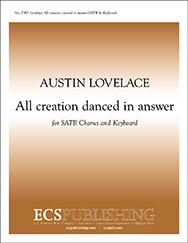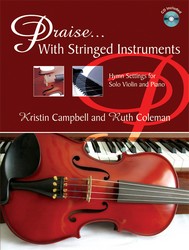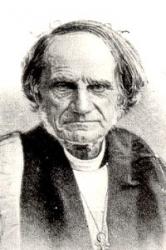Scripture References:
st. 1 = Ps. 24:7
st. 2 = Luke 24:50-51, Acts 1:9
st. 3 = Eph. 2:6, Heb. 1:8, Ps. 68:18
Replete with biblical imagery and allusion, this text by Christopher Wordsworth (PHH 361) was published in his Holy Year (1862) in ten stanzas. John Julian considers "See, the Conqueror" to be one of Wordsworth's finest hymn texts.
The text views the ascending Lord being sung to by angels at heaven's gates (st. 1), recalls Christ's suffering, death, resurrection, and ascension (st. 2), and looks forward to our reign with Christ in glory (st. 3). The text emphasizes not only the event of the Ascension but also its meaning for us: in Christ's ascension, "we by faith can see” our own.
Liturgical Use:
Easter; Ascension; many other worship services.
--Psalter Hymnal Handbook, 1988
=======================
See the Conqueror mounts in triumph. Bishop C. Wordsworth, of Lincoln. [Ascension.] First published in his Holy Year, 1862, p. 99, in 10 stanzas of 4 double lines. In the latest editions of the Holy Year it has been divided into two parts, Pt. ii. beginning with st. vi. "Holy Ghost, Illuminator." Usually these two parts are given as separate hymns for congregational use. In addition a cento, beginning with stanza ii., "Who is this that comes in glory?" is given as a hymn. The original is one of Bishop Wordsworth's finest compositions, and is the nearest approach in style and treatment to a Greek Ode known to us in the English language. The amount of Holy Scripture compressed into these 40 lines is wonderful. Prophecy, Types, Historical Facts, Doctrinal Teaching, Extatic Praise, all are here; and the result is one grand rush of holy song.
--John Julian, Dictionary of Hymnology (1907)
Notes
Scripture References:
st. 1 = Ps. 24:7
st. 2 = Luke 24:50-51, Acts 1:9
st. 3 = Eph. 2:6, Heb. 1:8, Ps. 68:18
Replete with biblical imagery and allusion, this text by Christopher Wordsworth (PHH 361) was published in his Holy Year (1862) in ten stanzas. John Julian considers "See, the Conqueror" to be one of Wordsworth's finest hymn texts.
The text views the ascending Lord being sung to by angels at heaven's gates (st. 1), recalls Christ's suffering, death, resurrection, and ascension (st. 2), and looks forward to our reign with Christ in glory (st. 3). The text emphasizes not only the event of the Ascension but also its meaning for us: in Christ's ascension, "we by faith can see” our own.
Liturgical Use:
Easter; Ascension; many other worship services.
--Psalter Hymnal Handbook, 1988
=======================
See the Conqueror mounts in triumph. Bishop C. Wordsworth, of Lincoln. [Ascension.] First published in his Holy Year, 1862, p. 99, in 10 stanzas of 4 double lines. In the latest editions of the Holy Year it has been divided into two parts, Pt. ii. beginning with st. vi. "Holy Ghost, Illuminator." Usually these two parts are given as separate hymns for congregational use. In addition a cento, beginning with stanza ii., "Who is this that comes in glory?" is given as a hymn. The original is one of Bishop Wordsworth's finest compositions, and is the nearest approach in style and treatment to a Greek Ode known to us in the English language. The amount of Holy Scripture compressed into these 40 lines is wonderful. Prophecy, Types, Historical Facts, Doctrinal Teaching, Extatic Praise, all are here; and the result is one grand rush of holy song.
--John Julian, Dictionary of Hymnology (1907)


 My Starred Hymns
My Starred Hymns








